We can see a lot of stars in the Ukrainian sky at night. Some of them are visible in the evening, others in the morning, and some all night long, and it’s quite easy to get lost in them. This is a story about twelve of the brightest stars that adorn cloudless autumn nights in our latitudes.
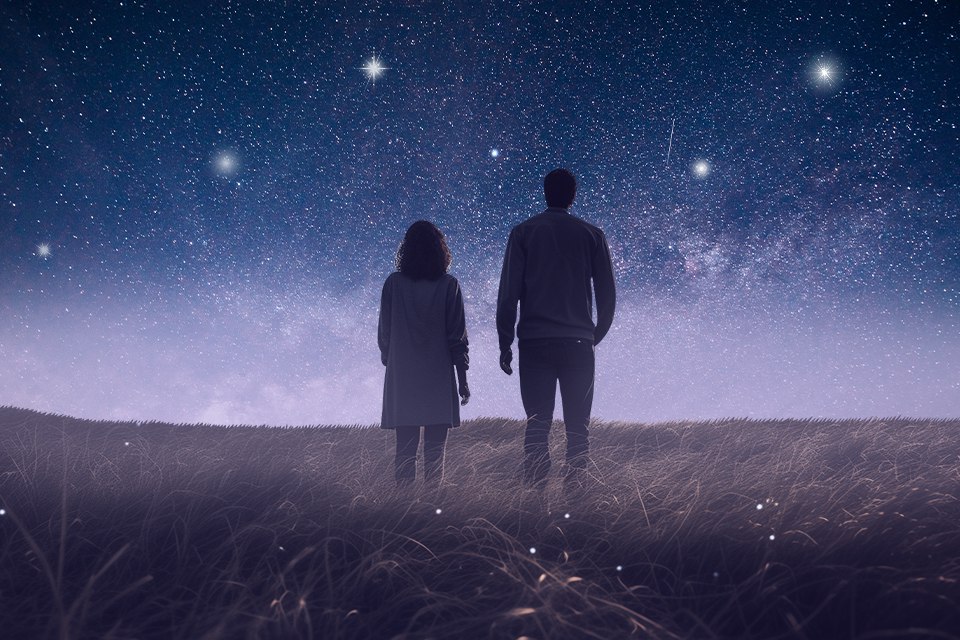
Look at the stars!
Looking at the sky
As winter closes, the dark part of the day becomes ever longer. At the same time, the sky is often clear enough to see the stars. However, just looking at it can be confusing — there are so many of them!
To be able to navigate the sky a little bit, you need to know at least the brightest ones. But even this it is not so simple. The Earth rotates, so the stars “travel” across the sky during the night. Some of them are visible in the evening, some in the morning, and some all night long.
The brightness of a star does not mean that it is located near us. It’s just that the luminosity of some of them can be thousands of times higher than that of the sun. Such objects are clearly visible from distances of hundreds of light years. Here’s a list of the brightest stars that can be seen in our night sky in the next two weeks.
1. Sirius
Sirius, or α of the Canis Majoris, is the brightest star not only in Ukrainian autumn, but also in the entire starry sky of the Earth. To see it in the next two weeks from the territory of Ukraine, you need to get up early in the morning, as it will rise after one in the morning in the southeast and move slowly along the horizon until dawn.
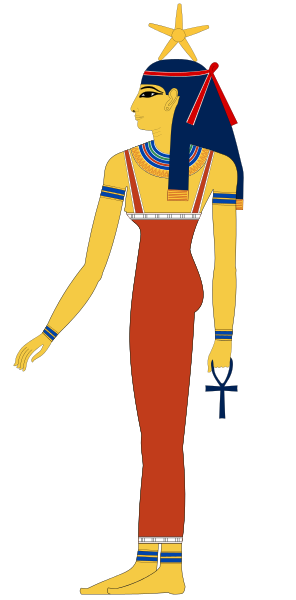
Sirius is the closest star to the Sun that can be seen in the Ukrainian sky with the naked eye. Its distance is 8.6 light years. It is a relatively young star (its age is estimated at 200-300 million years) with a mass about twice that of the Sun and a surface temperature of 9940 K. It also has a satellite, a white dwarf, which can be seen from Earth only with powerful telescopes.
2. Arcturus
Arcturus, or α Boötis, on the contrary, is visible only in the evening in the fall. You can try to “catch” it over the western part of the horizon right after the Sun has disappeared behind it. However, this should be done quickly, as the star will also disappear behind the horizon around 21:00.
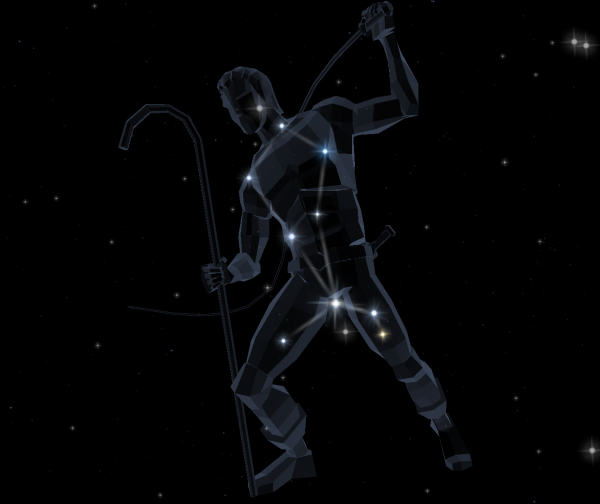
Arcturus is an old star located at a distance of 36.7 light years from us. Its mass is 30% greater than that of the Sun, and its age is 7.1 billion years. Because of this, it has already begun to turn into an orange giant, and its radius is 25 times larger than that of the Sun.
3. Vega
Vega, or α Lyrae, is a bright white star that is visible almost all night in autumn, only at 2-3 o’clock (depending on latitude) it disappears behind the horizon. After sunset, it can be seen exactly in the west quite high above the horizon. During the night, it slowly moves northward, while descending.
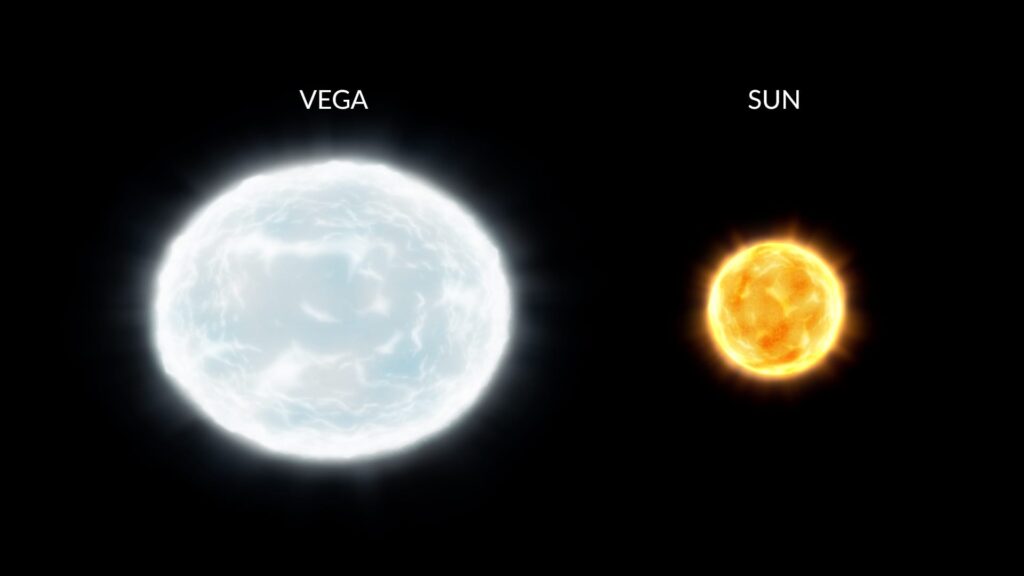
The distance to Vega is 25.3 light-years. It is a fairly young star. Its age is 450 million years, and its luminosity is about 40 times higher than the Sun’s. Interestingly, it rotates extremely fast — a “day” lasts only 17 hours there. As a result, its equatorial radius is 20% larger than the polar radius, meaning that it is noticeably flattened.
4. Capella
The Capella, or α Aurigae, is also clearly visible all night long. After sunset, this bright yellow star can be found above the northeastern part of the horizon. Until about midnight, it slowly moves eastward, rising at the same time, and around three in the morning it is almost at the zenith, after which it slowly descends to the west until dawn. Of all the bright stars, this one is located closest to the north pole of the celestial sphere (declination +46°), so for areas north of the 44th latitude it is not hidden behind the horizon.
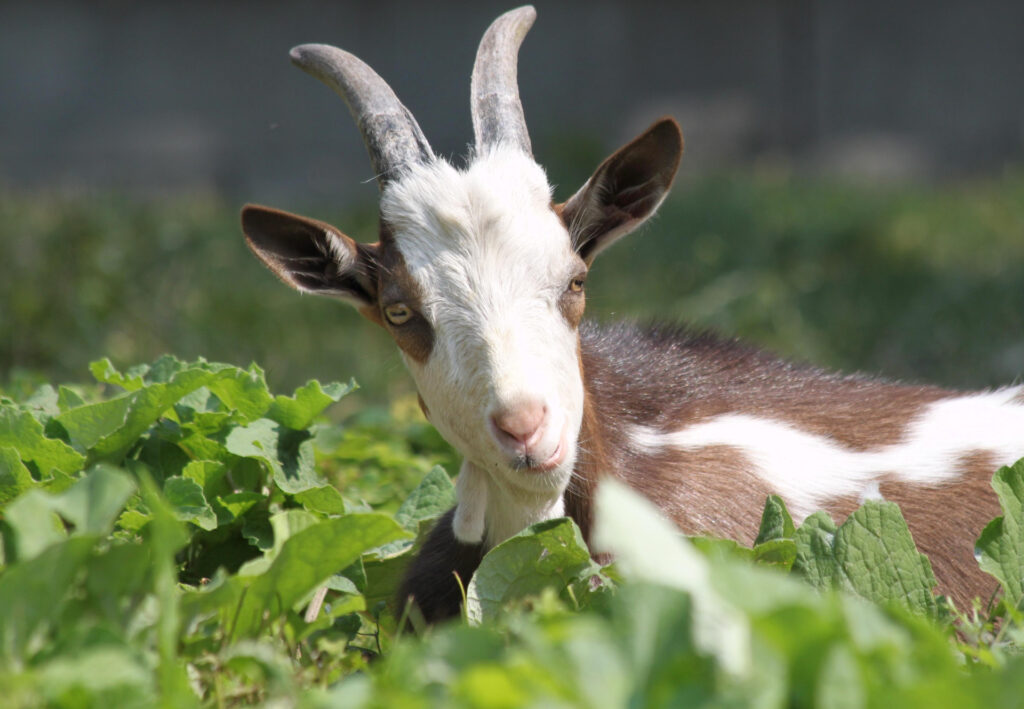
In fact, Capella is a pair of giant yellow stars, each of which is 2.5 times larger than the Sun and has a luminosity 77-78 times higher than the Sun. They orbit a common center of mass at a distance of only 100 million km, which is 2/3 of the average radius of the Earth’s orbit. This system is 42 light years away from us.
5.Rigel
To see Rigel (β Orionis), you’ll have to wait until the middle of the night. This bright blue star appears above the eastern horizon after 23:00. For the rest of the night, it slowly rises above it, moving first to the south and then to the southwest.
Rigel is a blue supergiant. Its mass is 18 times that of the Sun, its radius is 79 times larger, and its luminosity is 12 thousand times greater. It is not the brightest star in our sky only because it is 860 light years away.
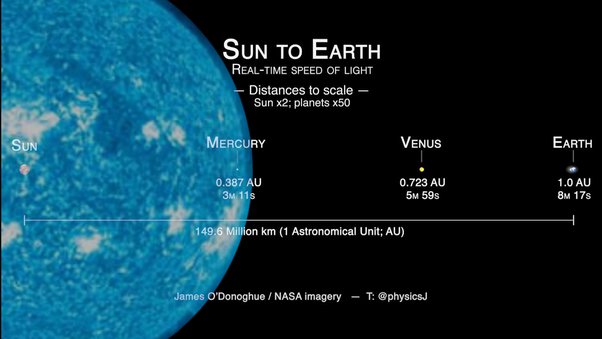
Interestingly, Rigel has a rather complex system of satellites. Two blue stars with masses of 3.8 and 2.9 solar masses orbit each other with a period of several days. Together, this pair orbits a common center of mass with a third blue star with a mass of about 4 solar masses. And together they orbit the main giant with a period of about 24 thousand years.
6. Procyon
Procyon, α Canis Minoris, appears in the autumn sky of Ukraine at about midnight in the east and moves southward until morning, gradually rising. The distance to this star is 12 light years.
In general, Procyon is very similar to Sirius, but it is much older — its age is 1.7 billion years. The star’s mass is 1.5 times that of the Sun, and its radius is 86% larger than that of our own luminary. It also has a companion, a white dwarf with a mass of about 60% of the Sun’s, which orbits the main component of the system in 41 years.
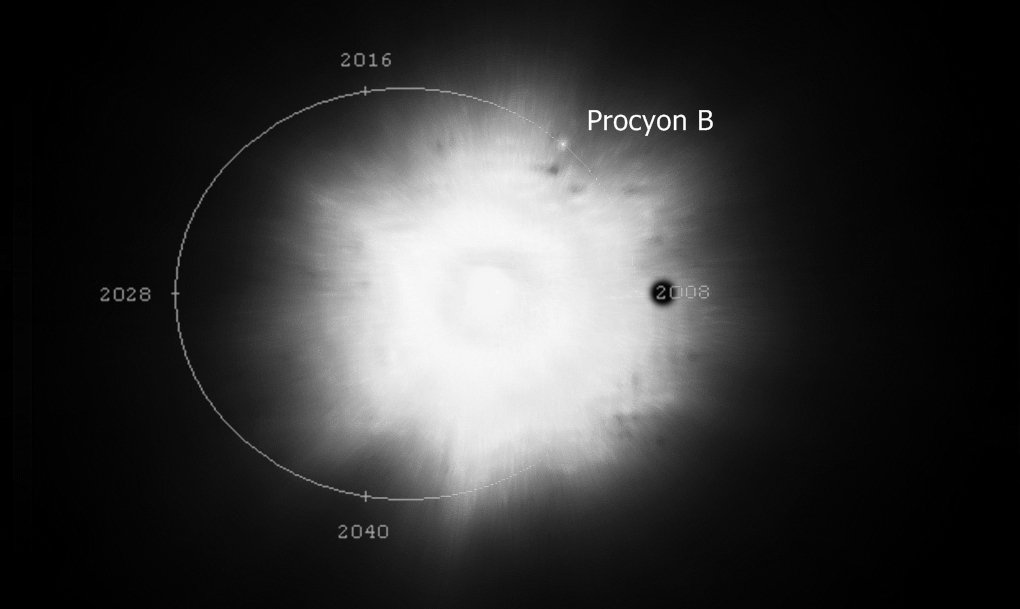
7. Betelgeuse
Betelgeuse, or α Orionis, is part of the same constellation as Rigel. This red star is located above and to the left of Rigel and rises at about the same time. Throughout the night, they move slowly across the sky together.
Betelgeuse is a red supergiant in the last stages of its evolution. Its mass is 16-19 times that of the Sun, and it is 760 times larger than our sun, making it the largest object among all of them. In a fairly short time, by cosmic standards, this star should explode as a supernova. Now it is mostly known for its variability. In recent years, it has been fading and then becoming brighter. Scientists have already put forward many different assumptions as to what causes this.
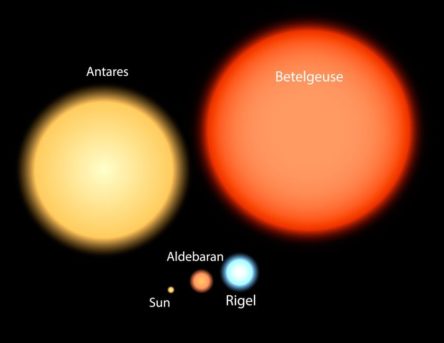
8. Altair
Altair, or α Aquilae, is another white star that is clearly visible in the first half of the night. Right after sunset, it is almost at its culmination, below Vega. Then it gradually shifts to the west, while sinking lower to the horizon, behind which it disappears after one o’clock in the morning.
Altair is similar to Vega. It is also a young hot star, with a mass and radius 1.7 times that of the Sun. Just like α Lyrae, the brightest star in the constellation of the Eagle has a high rotation speed around its own axis, so it looks a bit bloated at the equator from close up. The distance to it is 16.7 light years.
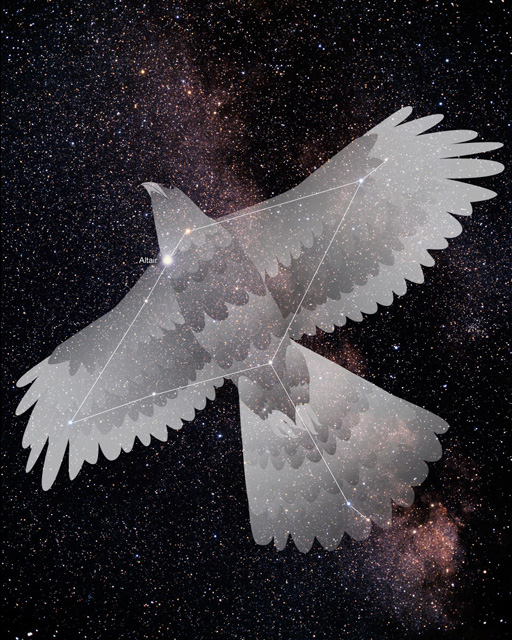
9. Aldebaran
Aldebaran, or α Tauri, is the next brightest star in the Ukrainian sky and the brightest luminary in the zodiacal belt. Now it can be seen almost all night long. It rises above the northeastern horizon after 8 p.m., culminates in the south at about 3 a.m., and begins to move westward in the early morning.
Aldebaran is another red giant, albeit not as huge as Betelgeuse. Its mass is 2.5 times that of the Sun, but its radius is 44 times larger than our own star’s. It is expected that in the next 2 billion years it will shed its shell and turn into a white dwarf. The distance to it in our era is 65 light-years, but 300 thousand years ago it was about three times closer, making Aldebaran the brightest of all the “fixed” stars in the Earth’s sky.
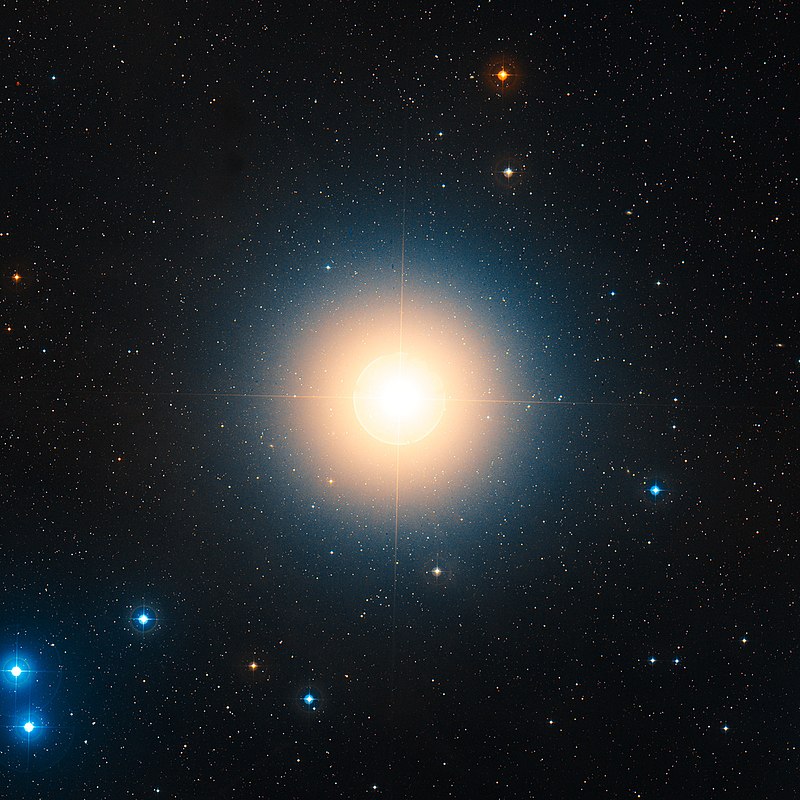
10. Antares
Antares, or α Scorpii, never rises high above the horizon in our latitudes, staying above its southern part most of the time. In autumn, this red star can be seen only in the evening, and in November it will set less than an hour after sunset, and at the end of the month it will finally disappear in the rays of our luminary.
In fact, Antares is a pair of stars. One of them is a red giant with a mass about 12 times that of the Sun. Its companion is a hot blue star, about ten times more massive than our sun. Both stars are very young. They are only 15 million years old, so relatively recently they were both blue. But in a few tens of millions of years, the second component will become a red giant after burning its hydrogen fusion fuel, and then the pair will turn into black holes or neutron stars.
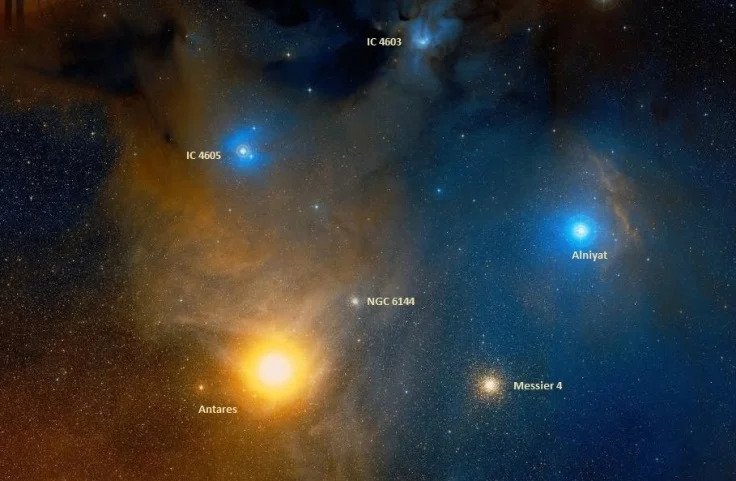
11-12. Castor and Pollux
Castor and Pollux are α and β Gemini, the brightest stars in this constellation. They appear together in the autumn sky of Ukraine after 10 pm. They rise from the horizon in the southeast, and before dawn they can be seen in the northeast, and quite high up.
Although from the Earth it seems that the two “star twins” are close, in fact they are quite different and are at a considerable distance from each other. It takes 34 years for light to travel from Pollux to the Solar System. This star is almost one and a half times heavier than the Sun and has a 9 times larger radius. A gas giant twice the size of Jupiter, orbits it.
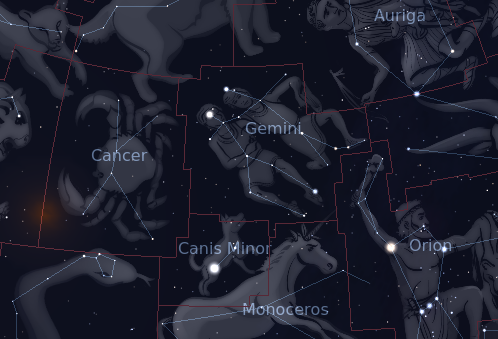
Castor is 50 light-years away from us. It is an eight-component star system, with a white star weighing about 2.6 solar masses as its main component. As many as 7 companion stars orbit around it: another white star, a yellow star, three red stars, and a brown dwarf.
Other stars in the sky
In fact, these are not all the brightest stars in the Ukrainian sky. The above list lacks Spica (α Virgo), which is visible at other times of the year — the Sun is now moving near it. In addition, in the fall, you can see many less bright stars in the sky that deserve to be mentioned.
For example, Deneb (α Cygnus) is visible almost all night long. In the evening, it is directly overhead and, together with Vega and Altair, forms the so-called “summer-autumn triangle.” Another bright star, Fomalhaut (α Piscis Austrini), can be seen in the first half of the night above the southern horizon.
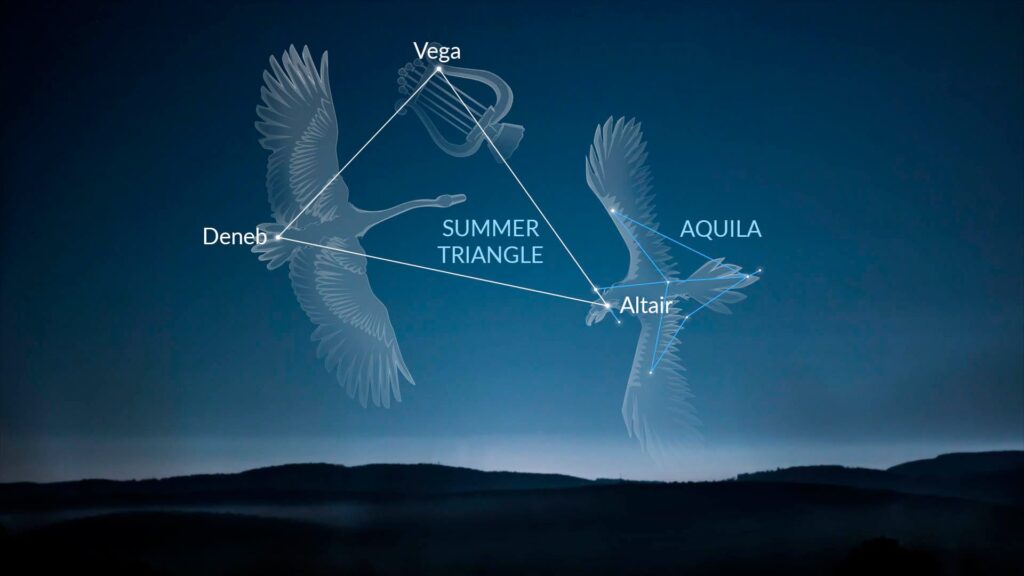
Among the seven stars of the Big Dipper, three are among the 50 brightest in the Earth’s sky. These are Alioth and Alcaeus (the two stars of the “handle”) and Dubhe, the outermost star of the “bucket”. And don’t forget about α of the Little Dipper, the North Star. These two constellations can be seen in the northern part of the sky.
And in the second half of the night, a whole scattering of bright stars appears in the sky. Alnitak, Alnilam and Mintaka form the “belt of Orion”. They are easy to find in the sky because they are lined up in a straight line exactly between Rigel and Betelgeuse. The constellation’s skewed hourglass shape is complemented by the stars Belatrix and Saif.
A little later than Castor and Pollux, Alhena, the third brightest star in the constellation Gemini, rises. It can be found between this pair and Betelgeuse. And almost before dawn, Regulus, α Leo, appears in the sky. It rises almost exactly in the east. Venus appears behind it, and then the Sun.
